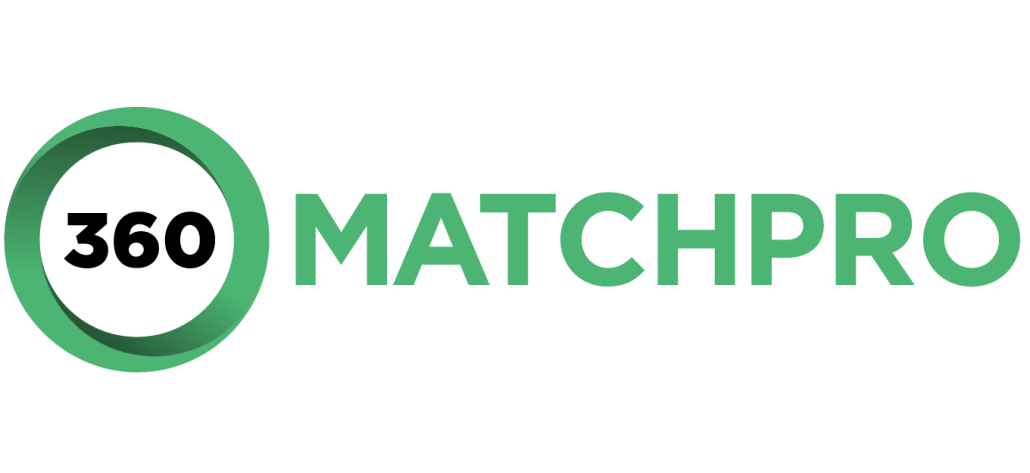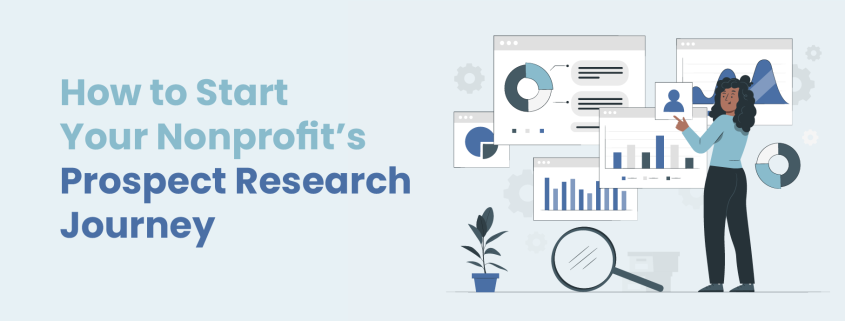How to Start Your Nonprofit’s Prospect Research Journey
Major donors, corporate sponsors, and planned donors are all core parts of your organization’s funding strategy. This is especially true today, as total donations dropped 2.1% in 2023. For nonprofits, these trends don’t mean a stop to pursuing moderate-level donors but rather signify that major donors are more important than ever.
But how does your nonprofit find major donors? The answer: prospect research.
To help your nonprofit identify and build connections with major donors, this guide will explore the ins and outs of prospect research, including:
Even if you aren’t following fundraising trends, securing major gifts is still a smart investment in your organization’s future. Whether you have a stable group of major donors or are just getting your program off the ground, a refresher on prospect research can always improve your process.
Prospect Research FAQ
What is prospect research?
Prospect research is the process of looking into a donor’s giving history and financial assets to determine whether they are likely to make a major gift. Essentially, donors your team thinks have the potential to make large gifts are “prospects,” and you research them to assess if they are strong major giving candidates.
Prospect research activities vary but primarily involve using a donor’s information—such as their name, address, and contact information—to search external databases for indicators that a donor has the capacity and affinity to make a major donation.
Why is prospect research important?
Very few major donors begin their relationship with a nonprofit with a major gift. Instead, they usually start as normal donors, and it’s up to organizations to cultivate relationships with them that lead to major gifts.
To find these select giving candidates in your pool of donors, prospect research is a must. By conducting prospect research, your nonprofit can:
- Secure more major donors. Major donors aren’t necessarily hiding among the rest of your supporters, but many will likely only make a major gift if you build personal relationships with them. With prospect research, you can discover these supporters and start the relationship-building process as soon as possible.
- Identify corporate giving opportunities. Looking up major donors often means looking up the sources of their wealth, which can uncover valuable business connections. As a result, some major donors may be willing to also help you get your foot in the door with companies to set up sponsorships and other corporate partnerships.
- Allocate major giving team’s time more effectively. From cultivating relationships to preparing fundraising asks to prospect research, major giving teams have a lot to do. Prospect research does take time, but it can save your team members vital time pursuing unpromising major giving candidates.
The bottom line is that prospect research is a time-saving and money-earning tool for nonprofits. Thanks to advances in prospect research technology, much of the process has become automated, allowing major gift officers to pinpoint worthwhile prospects and start the relationship-building process fast.
How does prospect research differ from wealth screening?
Earlier, we referenced the terms “capacity” and “affinity.” Essentially, wealth screenings only look at donors’ capacity to give. While this is important information, not every donor with the means of making a major gift is interested in doing so.
Prospect research takes a holistic view of donors to identify both wealth and philanthropic indicators:
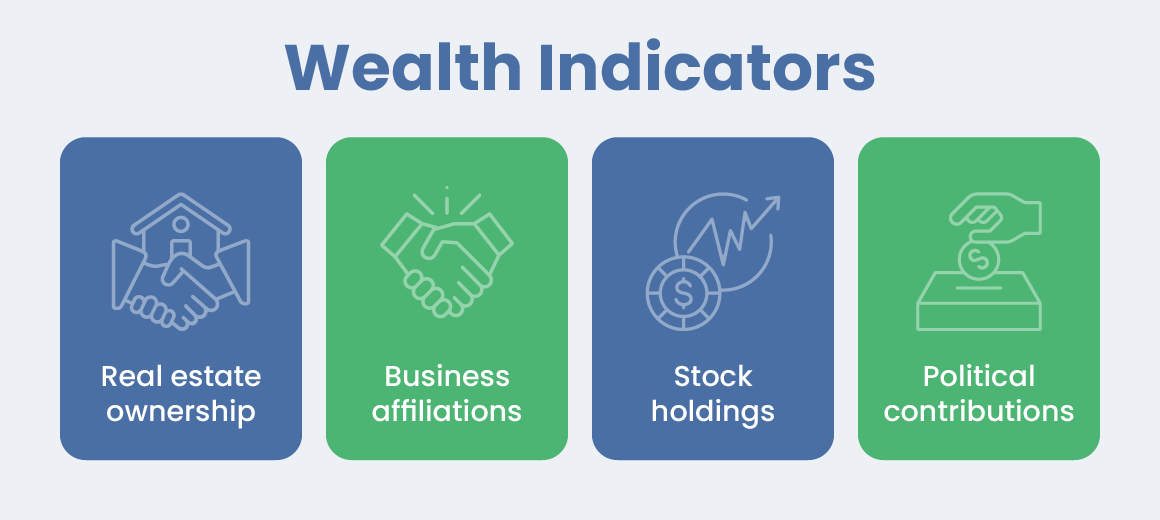
- Wealth indicators include financial assets such as real estate ownership, business affiliations, stock holdings, and political contributions.
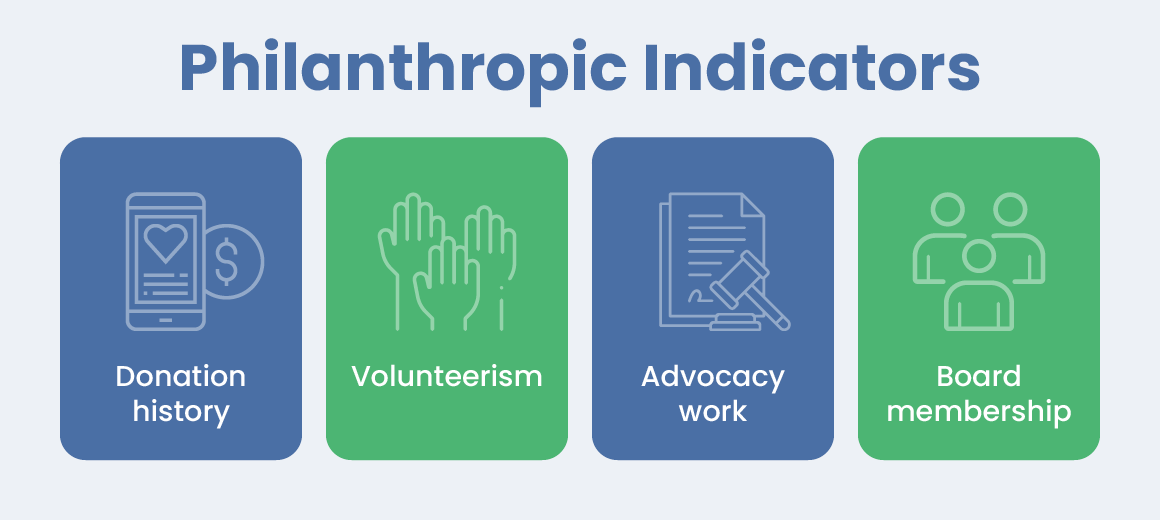
- Philanthropic indicators include past engagement with nonprofits that indicate an interest in philanthropic causes, such as donations, volunteerism, advocacy work, and board membership.
Prospect research can also turn up details that help you pursue relationships with major giving candidates. For example, you might discover a prospect is eligible for a matching gift and reach out to them to discuss how they can make a bigger impact through their employer’s corporate giving program, which can lead to conversations about other ways they can increase their impact.
How to Conduct Prospect Research
Clean your database.
During the prospect research process, you will add an extensive amount of donor data to your CRM, or constituent relationship management system. If your CRM’s data is already disorganized, the prospect research process will only exacerbate the situation.
As such, your first step should be to clean your database. A few steps you can take to do so include:
- Audit your data. First, determine what your database’s hygiene issues are. This might include duplicate donor profiles, incomplete information, out-of-date information, or useless information.
- Remove data silos. Data silos occur when data is not smoothly flowing through your various tech tools, instead getting stuck in a specific platform. For example, if your event management tools are disconnected from your CRM, you may be unaware of which donors are attending your events. Remove and prevent data silos by ensuring your software integrates with each other, working with a technology consultant to develop custom integrations, or moving your data manually.
- Create uniform data standards. After cleaning your database, implement data entry standards to keep your database clean. For example, you might edit your donation form to require email addresses or ensure it only accepts valid phone numbers.
Additionally, ensure your donor profiles are set up to manage prospect research information. This might include editing your profile template to include employer information, giving history, net worth, and any other information you feel will help identify major donors.
Establish major giving metrics.
Prospect research helps you discover major donors. But what counts as a major donor at your nonprofit?
Every nonprofit has different donation levels for what counts as a major donor. For example, at a small nonprofit, a $1,000 donation may be major giving territory, while an enterprise-sized organization may have a major donor floor of at least $50,000.
To help you determine exactly what your research is looking for, create a major gift chart.
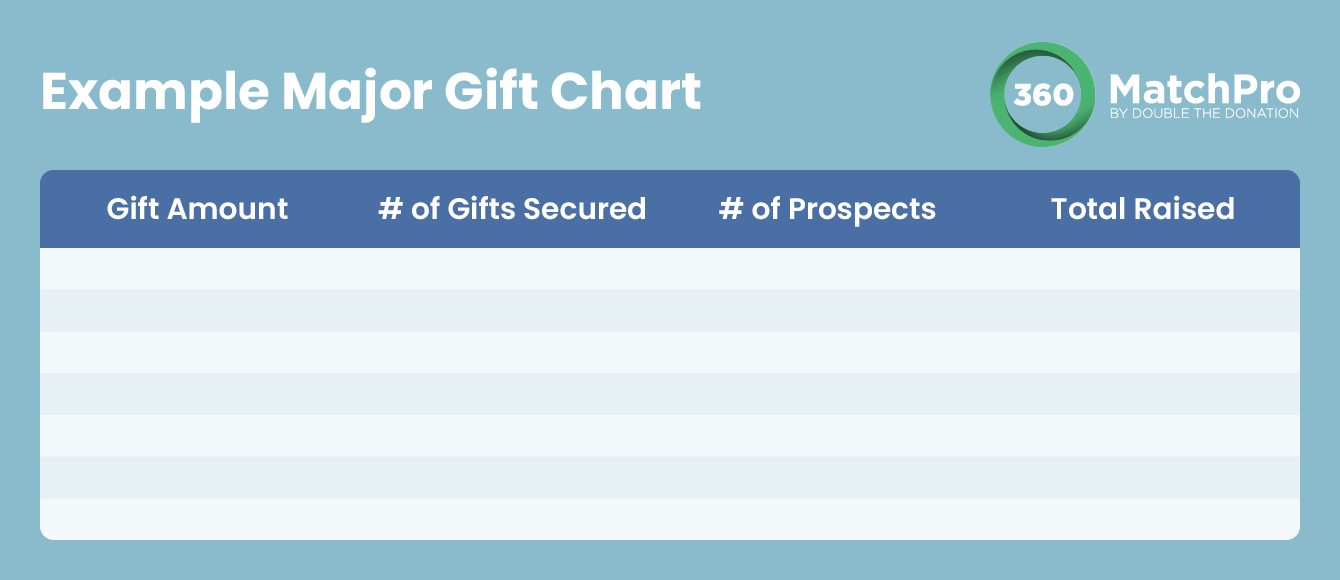
Major gift charts are a tool for determining how many major donors you have and how much they cumulatively can help your nonprofit raise. Consider your fundraising goals, the number of prospects, and how much you estimate each prospect would likely be able to give.
As you conduct your prospect research and reach out to donors, these numbers may change, which is fine. Your major gift chart is ultimately a planning tool that gives your team a rough idea of how much you can raise, how many gifts at what levels you need to earn, and your estimated total number of prospects.
Gather data.
At this stage, your prospect research process will diverge in one of two directions based on whether you intend to conduct your research in-house or hire a third-party service. To account for whatever your nonprofit decides, we’ll review the data-gathering process for both options.
In-House
For in-house research, your nonprofit should assemble a formal team that fills the following roles:
- Director. Your director oversees the entire prospect research process. As such, they are responsible for ensuring everyone is on track, working toward the same goal, and has the tools needed to complete their work.
- Prospect Researcher. Your team will likely have multiple prospect researchers responsible for researching multiple databases and publicly available sources to create detailed profiles for major giving candidates that determine their capacity and affinity for donating.
- Development Officer. Development officers, also known as major gift officers, are responsible for developing relationships with major gift candidates. Communicate your prospect research findings to this team to direct them toward promising candidates and give them the information they need to start relationship-building off on the right foot.
- Compliance Officer. Ultimately, prospect research requires gathering potentially sensitive data about your donors. A compliance officer will ensure your prospect research process follows all privacy and data laws regarding how you retrieve and store donors’ information.
Depending on the size of your team, there may be some overlap in roles. For example, your director might have some development responsibilities or your major gift officers might also conduct some prospect research on their assigned major giving candidates rather than just focusing on relationship building.
Third-Party
While your nonprofit will still need major gift officers to pursue major donor prospects and a director to manage them, a third-party prospect research firm can handle all other responsibilities for you.
These organizations have access to an array of relevant databases, including privately curated ones they pay to access. These experts will also create detail-rich donor profiles for you as part of the prospect research process, enhancing your data and handing your major gift officers all the information they need to pursue major donor relationships.
Identify target prospects.
After your team or third-party service performs prospect research, determine which donors are the most worthwhile to pursue. Along with capacity and affinity, a few other factors to consider include:
- Current goals. Consider your major gifts chart and how much you hope to raise in total. For example, during a capital campaign, your nonprofit will have a specified amount you need to reach during the quiet phase, which may determine how many prospects you need to target.
- Connections. If your nonprofit has a connection with a major donor prospect, the cultivation process may go faster. For example, one major donor might introduce you to other prospective major giving candidates. Pursuing these opportunities not only shows the donor who recommended them that you listen to them but also helps your nonprofit accelerate major gift cultivation processes.
- Timeline. On average, it takes a minimum of six months to secure a major gift. This means major gifts are a long-term investment. If your nonprofit needs to secure major funding quickly, it may be better to have major gift officers focus on the relationships they’ve already developed rather than starting new ones.
Additionally, track the information major giving prospects provide directly to you. If they have a preferred communication channel, be sure to use it when contacting them. If they state they are not interested in donating at this time but might do so in the future, hold off on fundraising asks. And if they state they would prefer to remain a mid-level donor, respect their choice and pursue other prospects.
Plan stewardship strategy.
With your target major giving prospects identified, it’s time to build relationships with them. These donors have likely already given once (which is how you discovered them), which means you can now steward them to persuade them to continue supporting your nonprofit and give again in the future.
In general, the stewardship cycle for major donors looks like this:
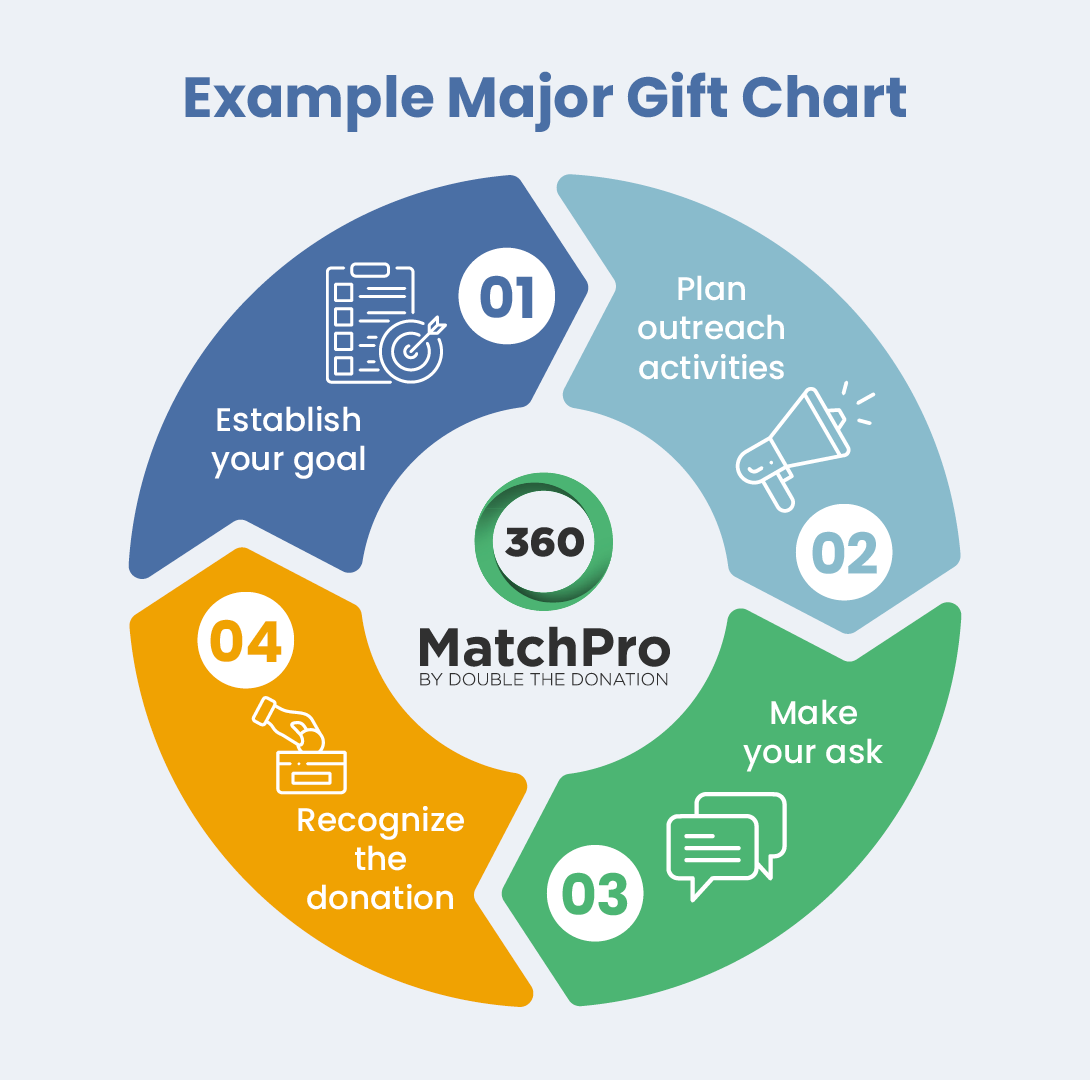
- Establish your goal. What do you hope to accomplish by cultivating a relationship with a specific major giving prospect? Often, this will be meeting a specific fundraising target, but other goals include networking, earning support for a specific campaign, or repairing a relationship after a failed fundraising appeal.
- Plan outreach activities. Major giving relationships require multiple touchpoints, such as one-on-one meetings and tailored activities. For instance, you might invite a major giving prospect to an event and have a major gift officer guide them around the event. Or, you might schedule regular phone calls or in-person meetings for coffee. Assess how major giving candidates respond to each activity and tailor your outreach strategy to their specific preferences.
- Make your ask. After establishing a solid relationship with the donor, it’s time to make your fundraising appeal. Have your development director or another member of leadership present in addition to the major gift officer who has been stewarding the donor. Whether the answer is yes or no, thank the donor for their time and consideration.
- Recognize the donor. Recognition for major donors should be more extensive than a quick thank-you email. Have major gift officers call donors directly to thank them for their support, honor them in speeches, and even consider constructing a donor wall to make your appreciation permanent.
As long as a major donor indicates they have an interest in supporting your nonprofit, you can continue to steward them. This means the cycle will repeat over and over again as long as your team can maintain it.
Prospect Research Tools
Prospect Research Database
There is a wide range of prospect research tools and databases available to nonprofits. These range from publicly available resources, like nonprofits’ Form 990s, to information that can be accessed through paid databases, such as details on real estate holdings and political donations.
One commonly overlooked type of prospect research tool is the corporate giving database. Corporate giving databases house information about companies’ philanthropic programs and activities. As such, these databases can help you identify major giving candidates with valuable business connections, as well as analyze all of your donors to find untapped giving potential through CSR initiatives like matching gifts and volunteer grants.
Data Appends
Before you can research your donors, you need basic information about them. After all, information like a donor’s name, phone number, and address are the data prospect research tools use to find other valuable information. Plus, you’ll feel far more confident that you’ve pinpointed their giving capacity information correctly if the names, phone numbers, and addresses all match with the details in the database.
To gather this information and ensure your database is accurate, consider using a data appending service. These services take your data and compare it to their third-party databases to fill in missing information and correct outdated data.
Data appends can be used to uncover a variety of information about your donors, including demographic information, phone numbers, email addresses, social media handles, birthdays, employment status, and more.
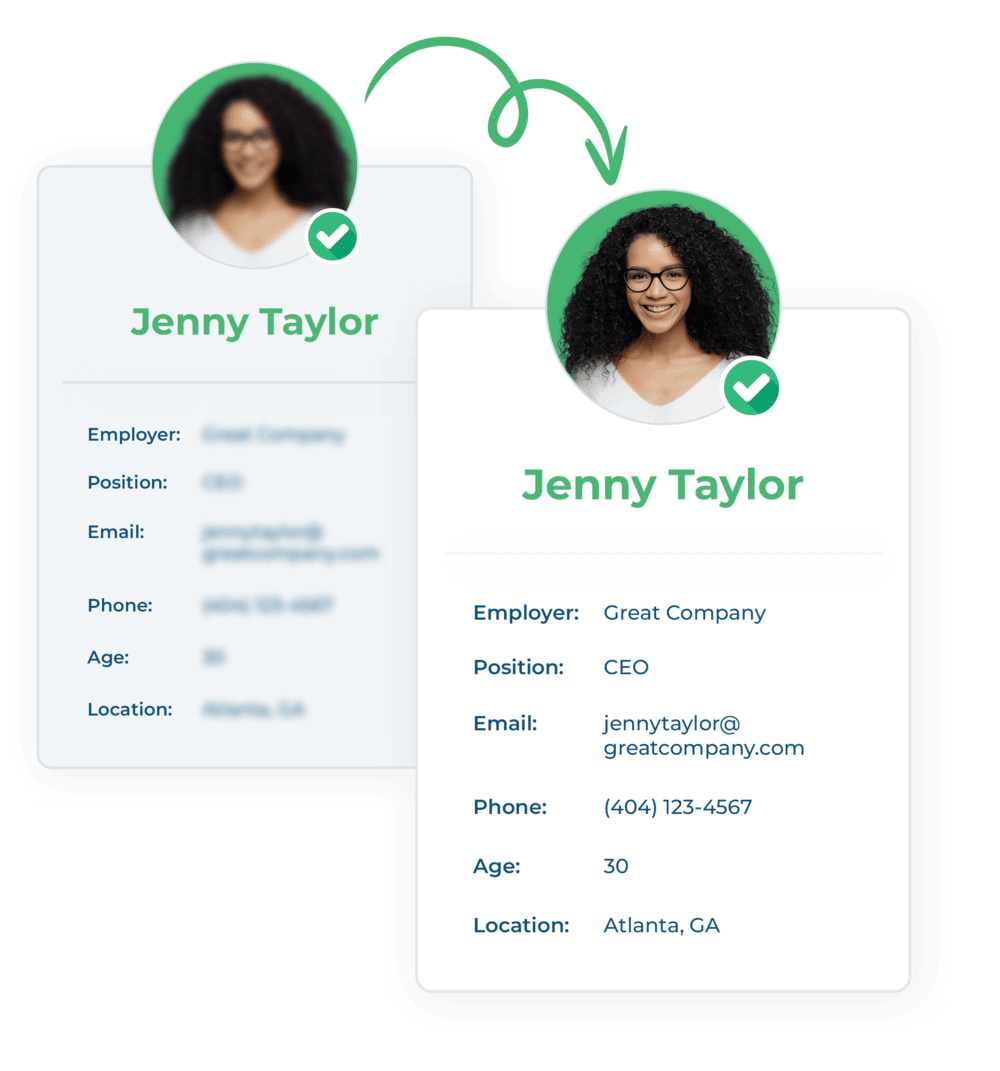
Donor Profiles
Ultimately, all the data you collect on prospects should be stored and organized in donor profiles. These will help you keep track of which major giving candidates to pursue and help you find commonalities between donors. For example, you might notice that two donors have connections to the same business, which could lead to a future corporate partnership.
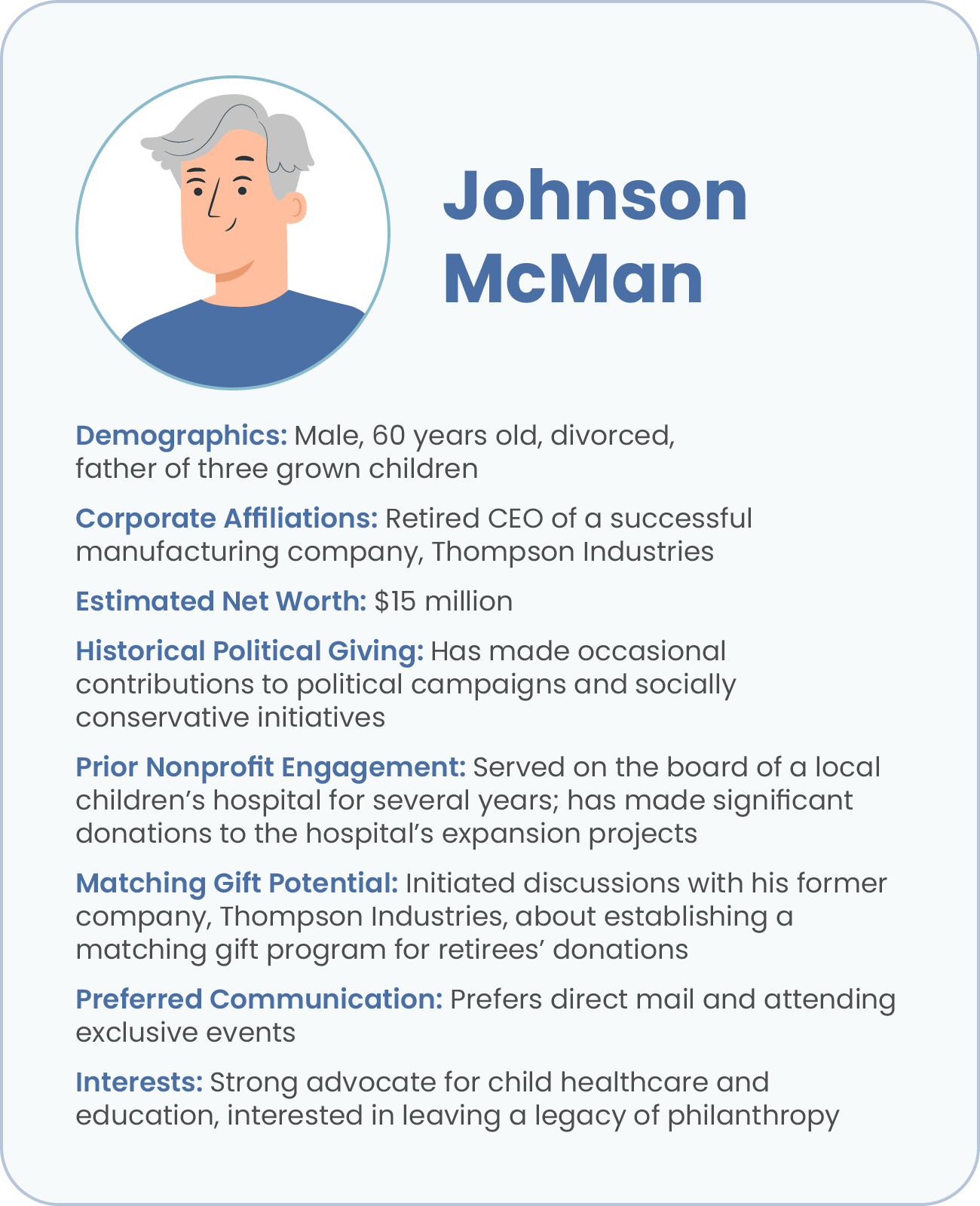
Most importantly, these profiles are a resource for your major gift officers. Whenever a major gift officer interacts with a prospect, they can record the donor’s responses in their profile. This helps them build the relationship, create a tailored fundraising strategy, and keep the relationship on track if there is ever a change-up in your major giving team.
More Fundraising Resources
Prospect research arms your team with the data they need to create a focused and efficient major gifts strategy. Identify not just those who can give in major amounts but also those who are likely to do so. This saves your team’s time and resources by ensuring they pursue the relationships with the most potential.
Additionally, prospect research can turn up your donors’ business connections. Discover more about how to tap into these opportunities with these guides:
- Matching Donation Challenges: How to Double Donors’ Impact. If you discover multiple supporters work for the same employer, that might be an opportunity to set up a donation matching challenge. Learn more about these programs in this guide.
- How to Unlock More Social Impact With Corporate Philanthropy. Corporate philanthropy can help your nonprofit’s mission leap forward. Discover the types of corporate philanthropy and how to connect with businesses.
- Corporate Giving Programs: The Ultimate Social Impact Guide. There are more corporate giving programs than just matching gifts. Check out the various kinds of corporate giving and how your nonprofit can unlock them.
